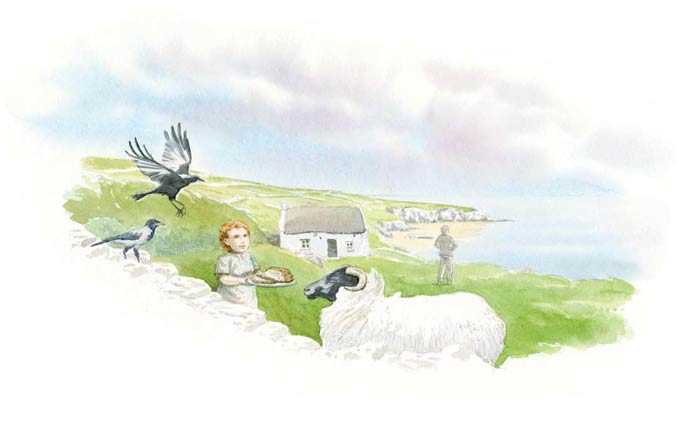Barmbrack

Form: Rectangular and elongated
Country of origin: Ireland
What distinguishes it from other methods of bread making: Not as rich as a cake, but fruity like a cake, and yeasty and fermented like bread
Category of bread: (10) Eaten at Halloween, it is a “ritual” bread, i.e. one that cultures make on a specific date for a specific holiday
Particularity: The tradition is to hide various objects that bring good luck for the year to come
Ingredients: Whole-wheat flour; eggs; warm milk; sugar; salt; baker’s yeast; butter; currants; sultanas; candied fruit and fruit peels

Ireland
Halloween was most certainly a Celtic pagan harvest festival, probably marking Samhain and the beginning of the last day of autumn on the Celtic calendar, and celebrated from the 31st of October to the 1st of November. Along with All Saints’ Day, Samhain and Halloween remind us of folkloric or ancient religious rituals that above all demonstrate the bonds of complicity and respect that people had developed with nature, in this case with the beginning of winter and the end of the harvest.
This boundary between now and the hereafter has not been so firmly entrenched in any other country in the world as in Ireland, where it started. Halloween is therefore celebrated with particular fervor. Barmbrack, a special bread, is associated with these festivities. It is a sort of pain-surprise, with little objects inside it, resembling a sleeve out of which the surprise good luck objects are pulled out and distributed to guests. A similar cake can be also be found in another setting, with the King Cake, eaten during the Christmas holidays and on Epiphany, part of the Catholic tradition. The guest who gets the trinket hidden inside the King Cake has the right to know and choose his or her fortune.
Barmbrack is a wheat bread made with leavening or yeast. It is made richer by adding currants and sultanas, dried or fresh fruit, and spices, depending on regional traditions and the whims of the moment. But most importantly, the inside is filled with frangipani before covering the cake, and the figurines are hidden. Once the guests have found all the good luck objects, the good news is announced. For example, a medallion can predict that you are going to take holy orders in the year to come; a coin, that you have a bright financial future; a ring, that you are going to be wed, etc. The tradition continues today.

